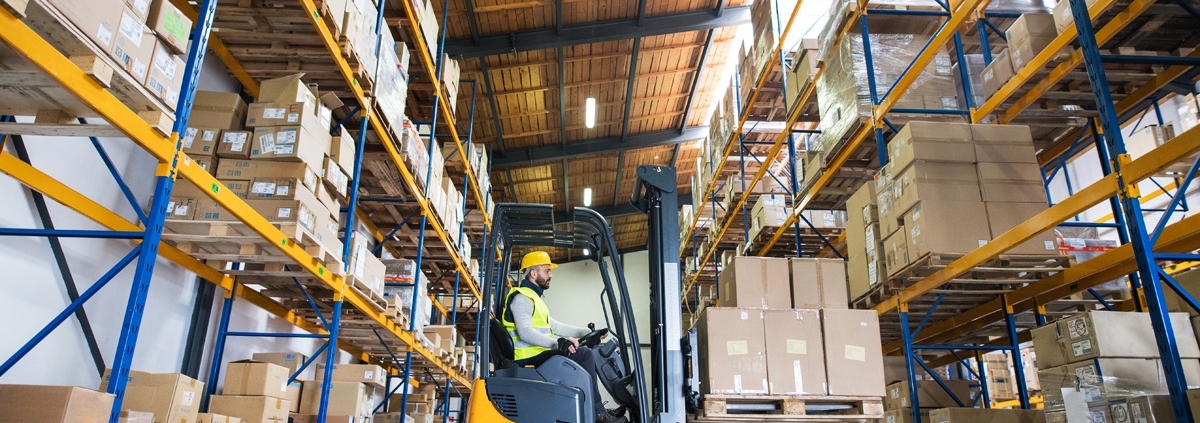Workplace Safety and Wood Pallet Handling

Companies recognize the importance of wood pallets and the imperative for working safely around them. With 80% of U.S. commerce transported under pallets, their role is crucial in warehouse and supply chain operations. While each workplace will have a unique risk profile that will ultimately inform its approach to working safely with pallets, it is essential to consider worker interactions with pallets in health & safety programs. In this post, we look at safe work practices regarding the handling of wood pallets and working in their proximity.
Pallet safety in operational health and safety programs
The Ontario Province Workplace Safety & Prevention Services (WSPS) recommends that companies incorporate a pallet safety program, including pallet inspection, removing damaged pallets from use, and properly handling and storing pallets. Consider the best practices listed below when incorporating pallet safety into your organization’s health & safety approach:
- Train supervisors and workers on all safe practices and procedures – Workers who handle pallets and work around them are exposed to strains and sprains, cuts and abrasions, as well as other risks. Employees can minimize risk by exercising best practices, introduced through training, and reinforced daily by effective supervision.
- Use appropriate personal protective equipment (PPE) – Glove and safety shoe usage are often a requirement for personnel who handle wood pallets. Gloves protect against cuts and puncture wounds, while safety shoes guard against the impact of a dropped pallet or stepping on a protruding nail from a broken pallet.
- Implement a process to identify and remove damaged pallets from service, and restock loads on undamaged pallets – WSPS stresses the importance of establishing a routine of inspecting pallets and removing damaged ones from service for return to your pallet provider. Without a formal process for removing damaged pallets, they can easily get mixed up and find their way back into service. The use of broken pallets can increase injury risk to workers.
- Eliminate trip & fall hazards: pallets in pedestrian walkways and pallet debris – Avoid setting pallets in pedestrian walkways, even temporarily, where they can result in trip & fall hazards. Also, clear wood pallet debris from the floor as frequently as needed to minimize the risk of twisted ankles or falls. In the warehouse, dock locations and order picker start and staging points often generate the most debris.
- Eliminate trip & fall hazards: walking on top of pallets and between them – You can lose balance and fall when walking on the top deck of wood pallets and between closely placed pallets. Engineering your process to eliminate the need to walk on pallets or between them can pay dividends. A straightforward way to eliminate the need to step onto a pallet deck to reach a box at the far end of it is through using a picking hook to extend the warehouse worker’s reach.
- Utilize a team lift approach to manually handling heavier, larger pallets – While mechanized solutions such as the forklift or pallet dispenser are generally preferred for lifting or positioning pallets, manual handling is a fact of life in many warehouses. Facilities may encourage a team lift of empty pallets by two employees, particularly for heavier or large pallets. When lifting a pallet solo, keeping it in proximity to the torso helps to maintain a close center of gravity.
- Never use pallets as a lift platform – Only use approved, engineered lift platforms for elevating workers, and only after having received and signed off on necessary training. Pallets are engineered to support uniformly distributed loads, not people. A pallet should never be used as a man lift.
- Never Stand Empty Pallets on End – While it might seem convenient, avoid resting empty pallets standing on end. Pallets standing on end are highly unstable. If they tip, they can cause lower-body injuries.
Ultimately, wood pallets are a crucial component in the safe and efficient function of warehouses and supply chains. Take time to understand the hazards and exercise best practices. Make wood pallet safety a part of your health & safety conversation.










